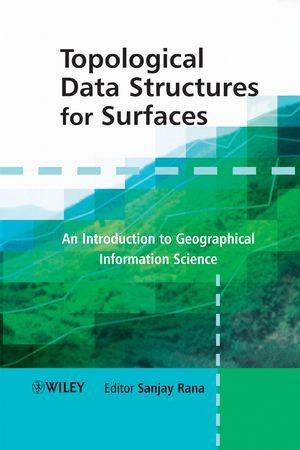

Most ebook files are in PDF format, so you can easily read them using various software such as Foxit Reader or directly on the Google Chrome browser.
Some ebook files are released by publishers in other formats such as .awz, .mobi, .epub, .fb2, etc. You may need to install specific software to read these formats on mobile/PC, such as Calibre.
Please read the tutorial at this link: https://ebookbell.com/faq
We offer FREE conversion to the popular formats you request; however, this may take some time. Therefore, right after payment, please email us, and we will try to provide the service as quickly as possible.
For some exceptional file formats or broken links (if any), please refrain from opening any disputes. Instead, email us first, and we will try to assist within a maximum of 6 hours.
EbookBell Team

5.0
88 reviewsTopological Data Structures for Surfaces: an introduction for Geographical Information Science describes the concepts and applications of these data structures. The book focuses on how these data structures can be used to analyse and visualise surface datasets from a range of disciplines such as human geography, computer graphics, metrology, and physical geography. Divided into two Parts, Part I defines the topological surface data structures and explains the various automated methods used for their generation. Part II demonstrates a number of applications of surface networks in diverse fields, ranging from sub-atomic particle collision visualisation to the study of population density patterns. To ensure that the material is accessible, each Part is prefaced by an overview of the techniques and application.
This book is invaluable for researchers and postgraduate students working in departments of GI Science, Geography and Computer Science. It also constitutes key reference material for Masters students working on surface analysis projects as part of a GI Science or Computer Science programme.
Content:
Chapter 1 Introduction (pages 1–12): Sanjay Rana
Chapter 2 Topographic Surfaces and Surface Networks (pages 13–29): Gert W. Wolf
Chapter 3 Algorithms for Extracting Surface Topology from Digital Elevation Models (pages 31–51): Shigeo Takahashi
Chapter 4 Construction of Metric Surface Networks from Raster?Based DEMs (pages 53–70): Bernhard Schneider and Jo Wood
Chapter 5 Contour Trees and Small Seed Sets for Isosurface Generation (pages 71–85): Marc van Kreveld, Rene van Oostrum, Chandrajit Bajaj, Valerio Pascucci and Dan Schikore
Chapter 6 Surface Shape Understanding Based on Extended Reeb Graphs (pages 87–102): Silvia Biasotti, Bianca Falcidieno and Michela Spagnuolo
Chapter 7 A Method for Measuring Structural Similarity among Activity Surfaces and Its Application to the Analysis of Urban Population Surfaces in Japan (pages 103–120): Atsuyuki Okabe and Atsushi Masuyama
Chapter 8 Topology Diagrams of Scalar Fields in Scientific Visualisation (pages 121–129): Valerio Pascucci
Chapter 9 Topology?Guided Downsampling and Volume Visualisation (pages 131–142): Martin Kraus and Thomas Ertl
Chapter 10 Application of Surface Networks for Augmenting the Visualisation of Dynamic Geographic Surfaces (pages 143–155): Sanjay Rana and Jason Dykes
Chapter 11 An Application of Surface Networks in Surface Texture (pages 157–166): Paul J. Scott
Chapter 12 Application of Surface Networks for Fast Approximation of Visibility Dominance in Mountainous Terrains (pages 167–176): Sanjay Rana and Jeremy Morley
Chapter 13 Issues and Future Directions (pages 177–183): Sanjay Rana